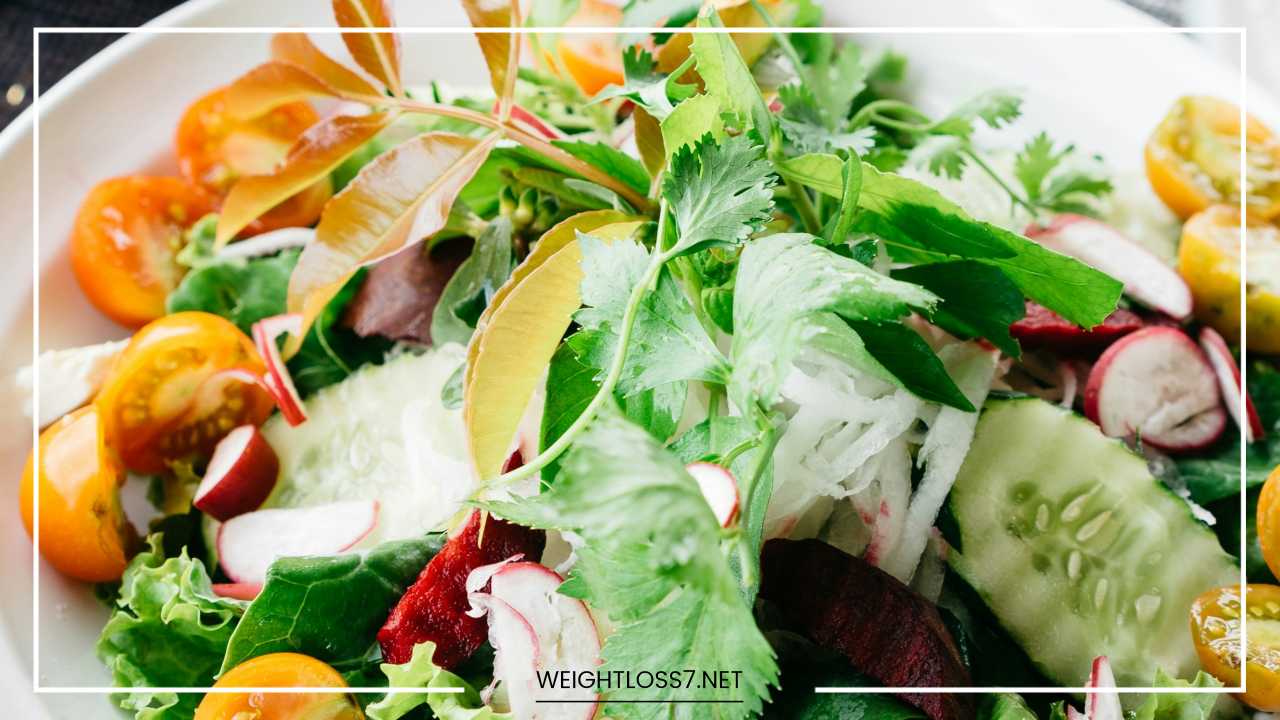Diet Plan for Weight Loss

Diet Plan
Shedding Pounds for a Healthier You: A Comprehensive Guide to Diet Plans for Weight Loss
Dieting. The word itself can conjure up images of bland salads, restricted portions, and constant hunger pangs. But what if weight loss could be about more than just shedding pounds?
A well-constructed diet plan should be a stepping stone towards a healthier lifestyle, one that fuels your body, keeps you energized, and fosters a positive relationship with food.
In this comprehensive guide, we’ll explore different diet plans for weight loss, helping you find the approach that best suits your needs and preferences.
We’ll also delve into essential tips for sustainable weight management, ensuring your journey is not just successful, but enjoyable and empowering.
Understanding Weight Loss: Calories and Beyond
Before diving into specific plans, let’s establish the core principle of weight loss: creating a calorie deficit. Simply put, you need to burn more calories than you consume. This can be achieved through a combination of diet and exercise.
However, focusing solely on calories can be a narrow lens. Different foods impact your body in various ways. Processed foods, for instance, might be low in calories but lack essential nutrients, leaving you feeling hungry and craving more. These cravings can lead to overeating, hindering your weight loss goals.
Therefore, a successful diet plan prioritizes whole, unprocessed foods that are rich in nutrients. These foods keep you satiated for longer, promote overall health, and support your body’s vital functions. Here’s a breakdown of the key players:
-
Macronutrients: These are the building blocks of a healthy diet: carbohydrates, protein, and fat. Each plays a crucial role in your body’s functioning. Complex carbohydrates, like those found in whole grains and legumes, provide sustained energy. Protein is essential for building and repairing tissues. Healthy fats, found in sources like avocados and nuts, support hormone regulation and satiety.
-
Micronutrients: Vitamins and minerals are essential for various bodily functions, even though they are required in smaller quantities. They support everything from immunity to digestion and enzyme activity. Aim to include a variety of fruits, vegetables, and whole grains in your diet to ensure you’re getting a good spectrum of micronutrients.
Exploring Different Diet Plans: Finding Your Perfect Match
There’s no one-size-fits-all approach to weight loss. Here’s an overview of some popular diet plans to help you find your ideal match:
-
The Mediterranean Diet: This heart-healthy plan emphasizes fruits, vegetables, whole grains, legumes, and healthy fats like olive oil. It promotes moderate protein intake, primarily from fish and poultry. The Mediterranean diet is a well-rounded approach that not only supports weight loss but also reduces the risk of heart disease, diabetes, and cognitive decline.
-
The DASH Diet: Designed to lower blood pressure, the DASH diet focuses on fruits, vegetables, and whole grains while limiting red meat, added sugars, and saturated fats. This plan encourages low-fat dairy products and lean protein sources like fish and chicken. The DASH diet’s emphasis on whole foods naturally promotes weight loss while improving overall cardiovascular health.
-
The Flexitarian Diet: This approach encourages a mostly plant-based diet with occasional inclusion of meat and animal products. It emphasizes fruits, vegetables, whole grains, legumes, nuts, and seeds. The Flexitarian diet offers flexibility while promoting healthy eating habits and weight management. It’s a great option for those who want to reduce their meat consumption but aren’t ready for a complete vegetarian or vegan lifestyle.
-
The Ketogenic Diet: This high-fat, low-carb plan throws your metabolism into a state called ketosis, where the body starts burning fat for fuel instead of glucose (sugar). While effective for weight loss, the Keto diet can be restrictive and may not be suitable for everyone. It’s crucial to consult with a healthcare professional before starting this plan, especially if you have any underlying health conditions.
Beyond the Mainstream: Exploring Alternative Options
If the above-mentioned plans don’t resonate with you, there are alternative approaches worth considering:
-
The Volumetrics Diet: This plan focuses on low-calorie, high-volume foods like fruits, vegetables, and broth-based soups. The idea is to feel full and satisfied without consuming a large number of calories.
-
The Intermittent Fasting Diet: This approach cycles between periods of eating and fasting. Popular methods include the 16/8 method (fasting for 16 hours and eating within an 8-hour window) or the 5:2 method (eating normally for 5 days and restricting calories for 2 non-consecutive days). It’s important to note that this approach may not be suitable for everyone, especially those with certain health conditions or pregnant or breastfeeding women. Consulting with a doctor is always recommended before starting intermittent fasting, particularly if you have any underlying health conditions, are pregnant, or are breastfeeding.
Choosing the Right Diet Plan for You: A Personalized Approach
With so many options available, how do you pick the right diet plan? Here are some key factors to consider to find the perfect match for your lifestyle and preferences:
-
Your Lifestyle: Choose a plan that fits seamlessly into your daily routine. If you have a busy schedule, consider options that are easy to prep in advance or have grab-and-go options. Factor in your cooking skills and access to fresh ingredients.
-
Your Preferences: Do you enjoy a variety of foods, or do you prefer a more structured approach? Some plans offer more flexibility, while others provide a clear framework. Choose a plan that you find appealing and can stick with in the long run. Consider your cultural background and any dietary restrictions you might have.
-
Your Health Conditions: If you have any underlying health conditions, consult with a doctor or registered dietitian before starting any new diet plan. They can help you choose an approach that aligns with your specific needs and provides necessary guidance.
Remember, sustainability is key. The best plan is the one you can adhere to for the long term. Don’t be afraid to experiment and find what works best for you. Here are some additional tips to make your weight loss journey successful and enjoyable:
Essential Tips for Sustainable Weight Management
-
Focus on Whole, Unprocessed Foods: Fill your plate with fruits, vegetables, whole grains, and lean protein sources. These foods are nutrient-dense and keep you feeling full longer, reducing cravings and preventing overeating.
-
Don’t Deprive Yourself: Occasional treats are okay! Restrictive diets often lead to cravings and binge eating. Aim for moderation and balance. Allow yourself indulgences in smaller portions, and focus on mindful eating during those times.
-
Mindful Eating: Pay attention to your hunger and fullness cues. Eat slowly and savor your food. Avoid distractions like watching TV while eating, as this can lead to mindless overeating.
-
Stay Hydrated: Water is essential for overall health, including weight management. When you’re dehydrated, your body can sometimes misinterpret thirst cues as hunger pangs. Aim to drink plenty of water throughout the day.
-
Pair Diet with Exercise: Regular physical activity boosts your metabolism and helps you burn calories. Find activities you enjoy, whether it’s brisk walking, dancing, or a team sport. Aim for at least 30 minutes of moderate-intensity exercise most days of the week.
-
Get Enough Sleep: When you’re sleep-deprived, your body produces more ghrelin, the hunger hormone, and less leptin, the satiety hormone. This can lead to increased cravings and difficulty managing your weight. Aim for 7-8 hours of quality sleep each night.
-
Manage Stress: Chronic stress can lead to unhealthy eating habits and weight gain. Find healthy ways to manage stress, such as yoga, meditation, or spending time in nature.
-
Seek Support: Surround yourself with positive and supportive people. Consider joining a weight loss support group or working with a registered dietitian for personalized guidance.
Building a Healthy Relationship with Food
Remember, weight loss is not just about shedding pounds; it’s about cultivating a healthy relationship with food. Here are some tips to foster a positive approach:
-
Practice Gratitude: Appreciate the nourishment your food provides. Take time to savor your meals and be mindful of the flavors and textures.
-
Cook More at Home: This gives you control over ingredients and portion sizes. Experiment with new recipes and healthy cooking techniques.
-
Make it Fun: Explore new cuisines and ingredients. Eating shouldn’t be a chore; it should be an enjoyable experience.
-
Don’t Demonize Food: All foods can fit into a healthy diet in moderation. Avoid labeling foods as “good” or “bad.”
Sample Meal Plans for Different Diets: A Guide to Getting Started
Choosing a diet plan is a great first step, but putting it into action can be daunting. Here are some sample meal plans for popular diet approaches to give you a practical starting point:
The Mediterranean Diet:
- Breakfast: Greek yogurt with berries, granola, and a drizzle of honey; whole-wheat toast with scrambled eggs and spinach
- Lunch: Chickpea salad sandwich on whole-wheat bread with a side salad and balsamic vinaigrette; lentil soup with a whole-wheat roll and a side of roasted vegetables
- Dinner: Salmon with roasted vegetables and quinoa; grilled chicken breast with a side of brown rice and sauteed greens
The DASH Diet:
- Breakfast: Oatmeal with fruit and nuts; whole-wheat pancakes with low-fat ricotta cheese and berries
- Lunch: Tuna salad sandwich on whole-wheat bread with a side of sliced vegetables and hummus; grilled chicken breast on a bed of mixed greens with a low-fat vinaigrette
- Dinner: Baked cod with roasted sweet potato and steamed broccoli; vegetarian chili with a side salad and whole-wheat crackers
The Flexitarian Diet:
- Breakfast: Smoothie made with spinach, banana, almond milk, and protein powder; whole-wheat toast with avocado and a fried egg
- Lunch: Vegetarian chili with a whole-wheat roll and a side salad; lentil soup with a side of whole-grain crackers and cheese
- Dinner: Turkey stir-fry with brown rice and vegetables; tofu scramble with whole-wheat toast and sauteed spinach
The Ketogenic Diet:
- Breakfast: Scrambled eggs with cheese and avocado slices; keto-friendly smoothie made with almond milk, protein powder, and low-carb greens like spinach
- Lunch: Grilled chicken salad with olive oil dressing; tuna salad with chopped celery and avocado
- Dinner: Salmon with roasted Brussels sprouts; steak with a side of cauliflower rice and sauteed mushrooms
Remember, these are just samples. Feel free to adjust them based on your preferences and dietary needs. There are countless healthy and delicious recipes available online and in cookbooks to inspire you.
Beyond the Meal Plan: Essential Tools for Success
Here are some additional tools to equip yourself for a successful weight loss journey:
- Meal Planning and Prepping: Dedicate some time each week to plan your meals and prep ingredients in advance. This can save you time and prevent unhealthy choices when you’re short on time.
- Track Your Progress: Keeping a food diary or using a weight loss app can help you stay accountable and track your progress. Monitor your weight, but also focus on how your clothes fit and how you feel overall.
- Find a Workout Buddy: Having a workout partner can help you stay motivated and committed to your exercise routine.
- Reward Yourself: Celebrate your non-scale victories (like sticking to your plan for a week) with healthy rewards like a massage or a new workout outfit.
Addressing Challenges and Maintaining Motivation
Weight loss is not always a smooth journey. There will be setbacks and challenges along the way. Here’s how to navigate them:
- Don’t Get Discouraged by Setbacks: Everyone has occasional slip-ups. The key is to learn from them and get back on track. Don’t let one bad meal derail your entire progress.
- Find Healthy Coping Mechanisms: Stress can lead to unhealthy eating habits. Develop healthy coping mechanisms for dealing with stress, such as exercise, relaxation techniques, or spending time in nature.
- Focus on Long-Term Goals: Remember, weight loss is a marathon, not a sprint. Focus on building sustainable habits that you can maintain for life.
Final Word: A Journey to a Healthier You
By taking a holistic approach that combines a healthy diet plan with regular exercise and a positive mindset, you can achieve your weight loss goals and cultivate a healthier, happier you.
Remember, this is a journey, not a destination. Embrace the process, celebrate your progress, and enjoy the delicious and nutritious foods that fuel your body and well-being.

















